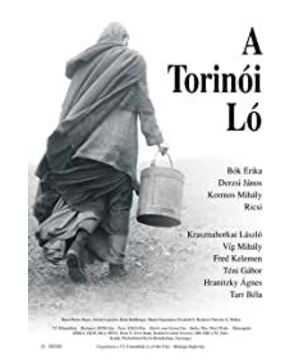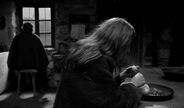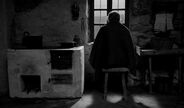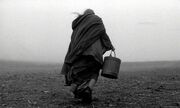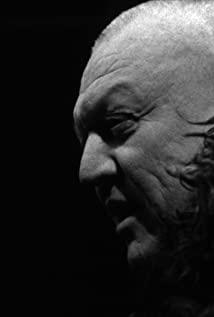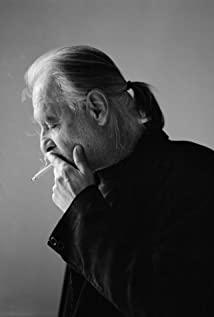This is a film with strong philosophical and religious implications. The director expresses an apocalyptic point of view by showing the six-day life of the father and daughter in the barren land where the wind is roaring and the sand is flying. Human existence and civilization are dissolving, but is it the seventh day outside the camera, the resurrection of Jesus after the Sabbath, or human beings themselves? Only the "long shot" language is used throughout the film. The use of long lenses and the use of some empty lenses, from an extremely calm perspective, use the "third eye" to see the sadness of human beings, how depressing and painful. The baroque organ and strings that are repeated on the score use a lot of dissonant intervals, making the calm shots full of tension and contradiction. The first four-minute long shot, shot at a low camera, sets the tone for the film, showing the sadness of the scene and the grandeur of the narrative. Day 1: Three long takes. "The wood borers stopped their voices, I've been listening to them for 58 years". Things seem to have changed. Day 2: Five long takes. The intruding neighbors are full of symbolism, and the metaphysical language of the neighbor's words "destroy, touch, acquire, and degenerate" is a reflection on human nature's good and evil greed. The protagonist's sentence "Don't talk nonsense, it's all nonsense" is a metaphysical dissolution, symbolizing the general public's numbness and indifference to their own living environment. Day 3: Six long takes. Gypsies symbolize human pleasure and indulgence, and represent a kind of depravity. And the religious doctrines that my daughter recites seems to be a kind of human self-restraint, but unfortunately this self-adjustment is insignificant under the influence of the outside world. Day 4: Six long takes. After dawn, the whole film began to turn. The depletion of the well and the lack of food or drink for the horses are all signs of impending "destruction". Fleeing home to find hope is blocked, proving that when changes in the outside world intensify, personal efforts are futile and everything is beaten back to its original state. An empty lens is facing the tree on the top of the mountain, which makes people more anxious in calmness. The daughter sat by the window, staring at the despair and helplessness outside the window, and her face was blurred in the gust of wind. Day 5: Five long takes. The darkness came suddenly, and people were overwhelmed. Lighting the lamp is a thirst for survival, for hope, in vain. Day 6: A long shot. Humans linger on until the picture goes black. Some symbols: 1. Bahrain card. Alcohol is necessary for daily life, and the thinking spirit of neighbors cannot do without it, and they must also take it with them when fleeing from their homes; 2. Horses that are about to die. Do not eat or drink, and naturally meet death. After losing its ability to drive, the life of the father and daughter has also undergone great changes; 3. The well. The same daily needs. The clinging father and daughter and the wild gypsy No one can do without it. The depletion of well water is the cessation of life; 4. Fire. It is the temperature that is the hope. Essential to cook potatoes and brighten up spaces. When the fires are extinguished, people will also die. Personal opinion: The director made this film with a strong eschatology. Raise deep doubts about the existing laws of human society. The whole movie makes people feel depressed, hopeless, powerless, and even suffocated. By coincidence, it took six days to download and watch the movie. Obsessed with alcohol, I was stagnant for two days until the influence of the alcohol passed, and I read it again with a clear mind. Invisibly, the time in the movie and some points of view that the director wants to express are somewhat consistent.
View more about The Turin Horse reviews


